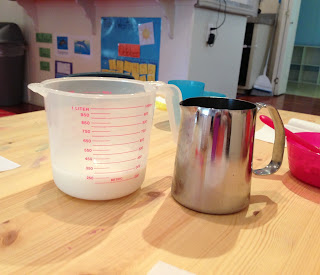The Rainbow Fish by Marcus Pfister is a wonderful book about sharing, and is a staple in many classrooms. Last week, my class wanted to read it over and over. Every time we read it, we talked about how nice the Rainbow Fish was to share with his friends. Every time one of the children shared a toy with a classmate, I said, "You shared like the Rainbow Fish!"
With all this talk about sharing and the Rainbow Fish, I wanted to come up with an activity that would allow the children to practice sharing. This is what I made.
Besides being a sharing activity, it also allows children to practice their number as they match the scales to the appropriate fish.
You can download the templates I made for the Rainbow Fish and his friends below.
I colored mine, cut them out, and laminated them. To make the scales sparkly, I just brushed them with glue and and sprinkled some glitter on them. Then I put five pieces of Velcro on the Rainbow Fish.
I also put one on each of his friends and on each scale.
Then I used permanent marker to write a number on each scale and one on each of Rainbow Fish's friends. I made sure to give him one permanent sparkly scale for himself! Now the children can take the scales off of the Rainbow Fish and share them with all of his friends!
Here's the link to download my fish templates, which you can color and cut out: http://www.aspenleafpreschool.com/wp-content/uploads/2012/10/Fish-templates.pdf



























